What does Pelagic refer to?
Bonus points for defining Holopelagic!
What is, anything relating to the open sea!
Bonus; what is something that spends its entire life cycle in the water column!
What does Benthic refer to?
What is anything associated with or occurring on the bottom of a body of water!
Which is the proper descending order (from the shoreline down)?
A) Continental Shelf, Slope, Rise, Abyssal Plain
B) Continental Rise, Shelf, Slope, Abyssal Plain
C) Abyssal Plain, Continental Rise, Shelf, Slope

A) What is the Shoreline, to the Continental Self, to the Continental Slope, to the Continental Rise, and down to the Abyssal Plain
Shore - Shelf - Slope - Rise - Abyssal
What makes something Planktonic?
What is an organism that has little capability to swim and is at the whims of the currents.
What classifies something as MegaFauna?
What is a large animal, visible to the naked eye.
Typically weighing around/ above 50kg but some say as low as 10kg or as high as 100-1000kg.
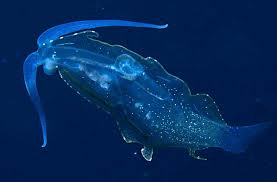
What Phylum is this??
A) Mollusca (Snails, Slugs, etc)
B) Cnidaria (Jellyfish, corals)
C) Annelida (Worms)
 What is A!
What is A!
This is a pelagic sea slug, called a Phylliroe!
A nudibranch, they grow to around 5cm, and typically live around 60-200m deep and preform vertical migrations at night.
Phylliroe are relatively transparent apart from its bio-luminescence it flashes when disturbed.
They prey on Jellyfish, and its larval stage is considered parasitic until it can feed on its own.
Are Jellyfish at all benthic?
A) Yes, they are entirely benthic
B) Kinda, some require a benthic stage
C) No, they spend their entire life in the open sea
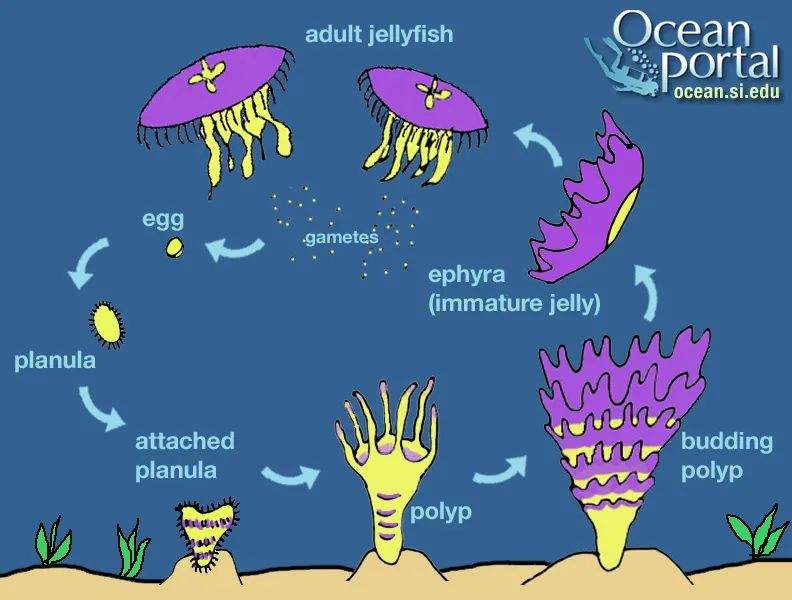
B) What is Kinda!
Although most have not been observed, it is the general consensus that most Jellyfish go through a Polyp stage in their adolescence.
The Jellyfish Turritopsis dohrnii (the immortal Jellyfish) will return to their Polyp stage if injured or stressed.
Are there fish that keep a "garden?"

What is Yes!
One of the fish that we know partakes in a "Gardening" Practice is the Threespot Damselfish!
Males have been observed cultivating Algae growth (typically a feathery green or red algae), removing other unwanted algae, pests, and warding off other fish.
They do this for the purposes of nutrients as well as finding a mate.
If the female chooses his patch, she will lay her eggs and he will immediately fertilize them, and the pair will protect their territory and future young.
Are Jellyfish Plankton?
A) Yes
B) No
What is Yes! Jellyfish are considered Plankton!
Jellyfish are simple creatures, and largely move to the whims of the Tide. Jellyfish can be some of the largest Plankton and are considered Megaplankton in adulthood!
Fun Fact: Jellyfish are in the same phylum as Corals (Cnidaria)!
Whats the biggest Marine Creature?

Whats is the Blue Whale!
Balaenoptera musculus are the largest creatures on earth (and potentially the largest to ever live)! Weighing up to 330,000 pounds, growing up to 110 feet long (larger sizes are usually found in the Antarctic). Their hearts are around 5 feet tall- around 400x larger than the human heart.
Their Numbers are back on the rise! Although still an endangered species, things are looking up for this colossal Cetacean.
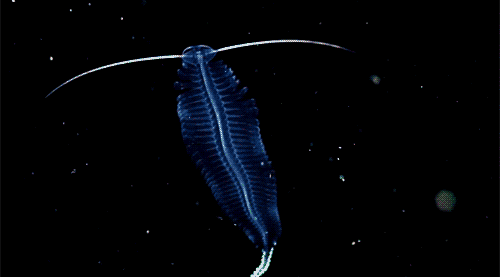
What Class of Annelid is this?
A) Oligochaeta (Hermaphroditic Worms)
B) Polychaeta (Parapodia Worms)
C) Hirudinea (Parasitic Worms)
What is B, a Polychaeta!
Specifically a Gossamer worm (Tomopteris).
They have a segmented body with fleshy/chitinous protrusions that act as mobility appendages! In most, while threatened they roll their body and expel a luminescent fluid from these appendages- mimicking a unappetizing Jellyfish.
There are many types of Gossamer worms, growing up to 60cm long. They are most commonly found 1000-3700m, and eat zooplankton.
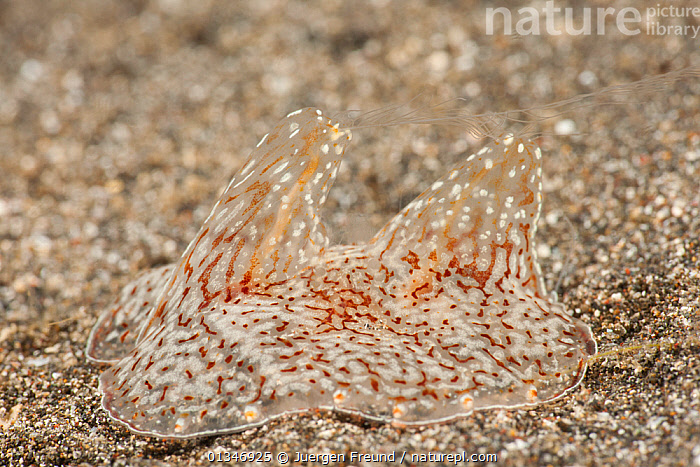
What Phylum is that?
A) Mollusca (snails, slugs, etc)
B) Cnidaria (Jellyfish, Corals, etc)
C) Ctenophora (Comb Jellies)
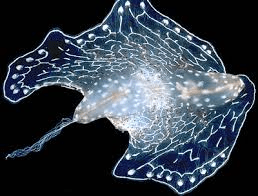
What is C, a member of Ctenophora (Comb Jellies)!
Commonly called Sea Gooseberries (Platyctenida). These little guys don't tend to get bigger than 1cm, and live primarily on the seafloor.
Comb jellies use rows of ciliary paddles called combs to move through the water column, or in this case, move across the sea floor. They have sticky stinging tentacles they can use to trap and consume prey.
Which creature is most detrimental to Pacific Kelp Forests?
A) Seals
B) Urchins
C) Nematodes
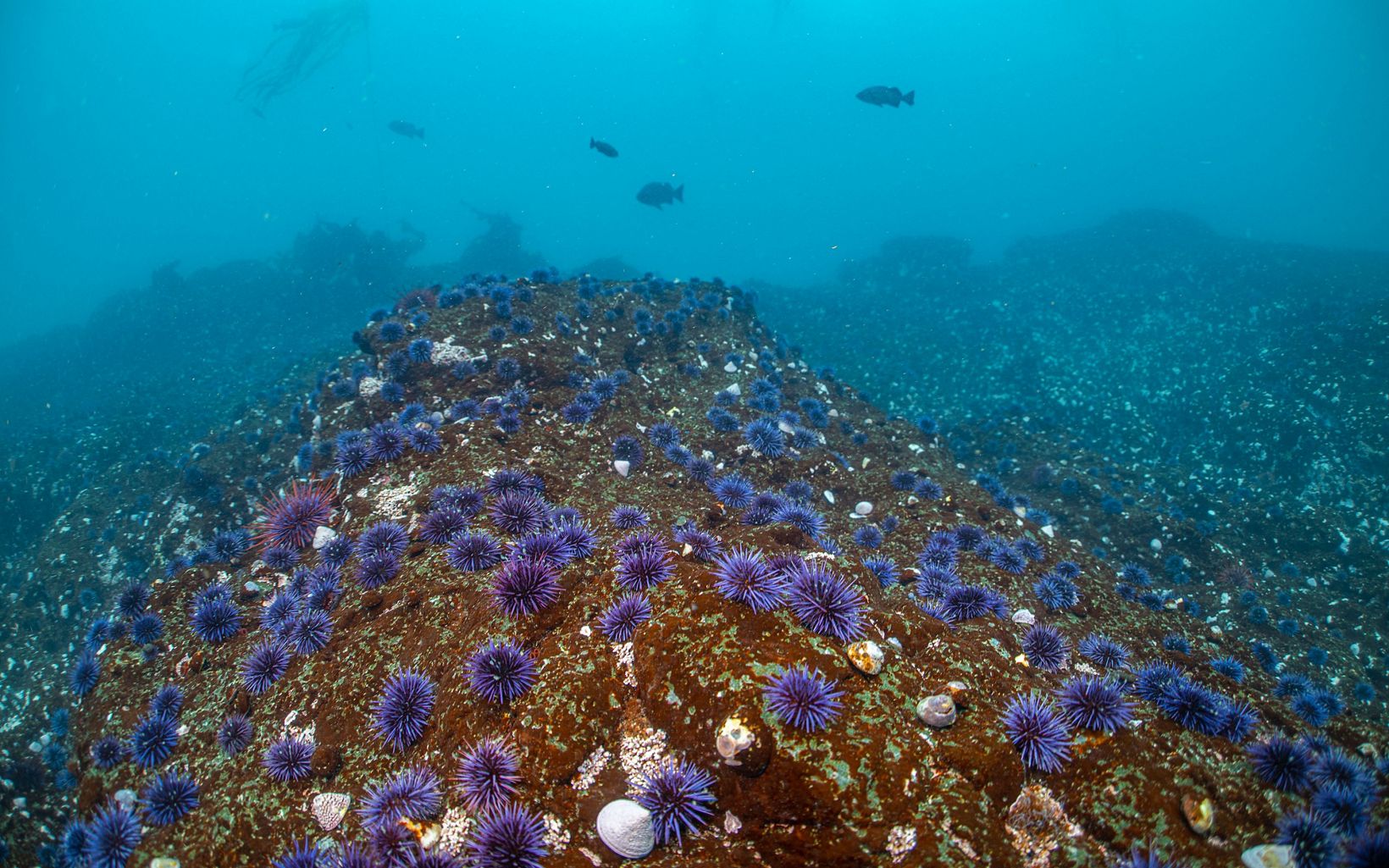
B) What is Urchins
Specifically the Purple Sea Urchin (Strongylocentrotus purpuratus).
A communal Urchin that lives in hoards. One of these hoards can have hundreds of potentially thousands of Urchins, and together they devastate kelp forests by chewing away at the base of the stem (stipe)- eventually creating Urchin Barrens.
What type of Fish is considered a Plankton?
A) Minnow
B) Gar
C) Sunfish
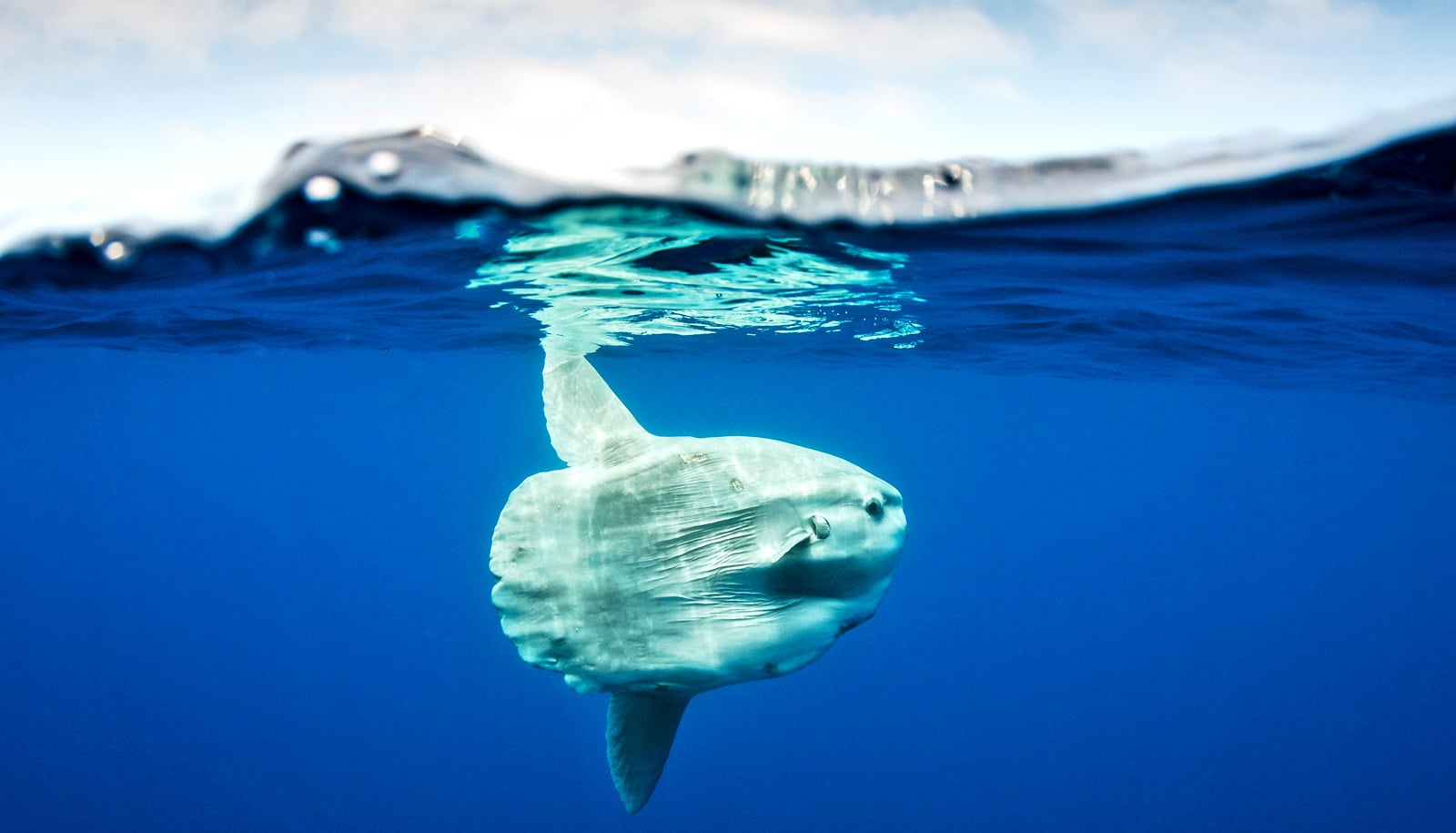
C) What is the Ocean Sunfish
The Ocean Sunfish (Mola Mola) is considered by many to be Planktonic due to its lack of back fin requiring them to rely heavily on currents.
Although, the Mola Mola is not a strong vertical swimmer they are very good horizontal Divers.
So, they may not be a traditional Plankton, and their title changes depending on the definition and person you ask. Many still consider them to be a type of Megaplankton.
Can Narwhal and Beluga mate?

What is YES!
They have very little documentation, but have been known by the Inuit for some time. They are called a Narluga! Just like the Pizzly bear (Grizzly & Polar bear mix), Narwhal and Baluga are part of the same family (Monodontidae) and have similar genetics.
There is currently a male Narwhal in the Saint Lawrence River that has been adopted by a pod of male Beluga, and if he is also adopted by the females and mates, we may get a living Narluga very soon!!!

What Phylum is this?
A) Echinodermata (sea stars, sea cucumbers, etc)
B) Mollusca (Snails, Slugs, etc)
C) Cnidaria (Jellyfish, corals, etc)
What is A! An Echinoderm!!
Pelagothuria natatrix, is a Sea Cucumber! One of only a few known pelagic Sea Cucumbers, although they typically live close to the sea floor and there is some evidence they do not spend their entire life in the water column.
They're very rare, living in typically cool waters, and can tolerate a range of oxygen density. They have most commonly been found at depths of 200-1500m but have been found at depths around 4500m.
Which creatures have a Mutualistic Relationship?
A) Shrimp and Gobi
B) Shrimp and Scallops
C) Shrimp and Krill

A) What are Shrimp and Gobi
While Shrimp have many Mutualistic relationships across their infraorder (Caridea), most popular being the Cleaner Shrimp.
Although this shrimp is different, the Pistol Shrimp has many accommodations, notably the ability to shoot loud bubbles at its prey, typically leaving small burns.
They have been documented forming Mutualistic relationships with Gobies. Building and sharing dens on the Sea floor. The Shrimp usually builds and maintains the den as the Gobi protects the entrance and alerts the Shrimp to danger.
This relationship has become highly sought after in the aquarium trade.
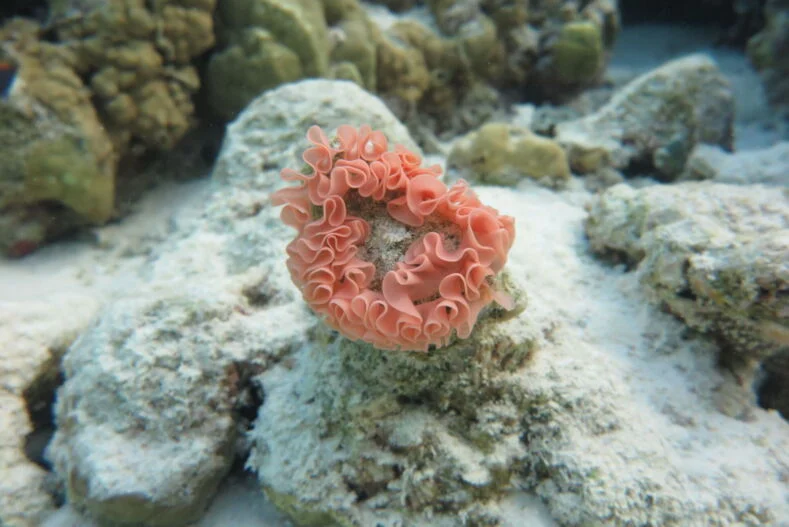
What is that?
A) Sea Sponge
B) Coral
C) Eggs
C) What are Nudibranch Eggs!!!
Often mistaken for a Coral, sponge, or even rogue noodles. These are the eggs of Sea slugs!

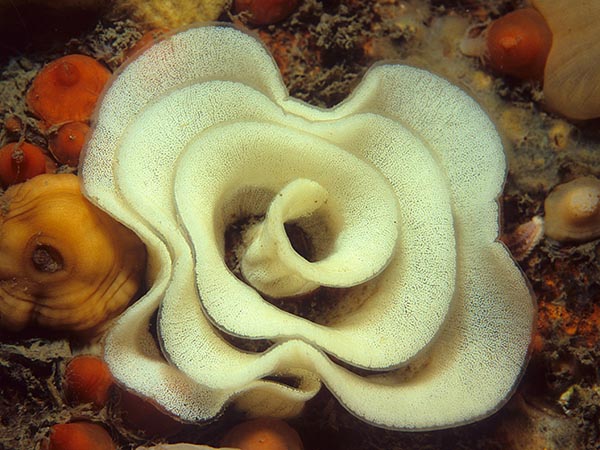


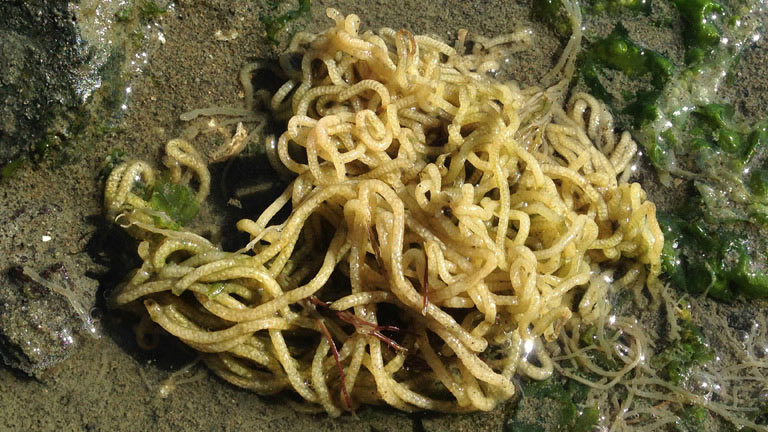

Our Favorite Plankton was never specified as any species by the creators of SpongeBob, but if we had to guess.
Would he be a;
A) Phytoplankton
Smallest Plankton, photosynthesizes, also known as micro-algae. Rand of shapes and sizes.
B) Copepod
Small crustaceans with a distinct pair of large antenna, with typically one median eye. They can be parasitic or eat Phytoplankton.
C) Moina
Small crustaceans with a distinct pair of biramous antennae and a bulbous body, with typically one median eye.
What is, there's no right answer
Plankton is the typical colour of Phytoplankton and has been shown eating light, but he's also eaten a variety of things from plants to chum like a Copepod. He also has only one eye, like most Moina and Copepod.

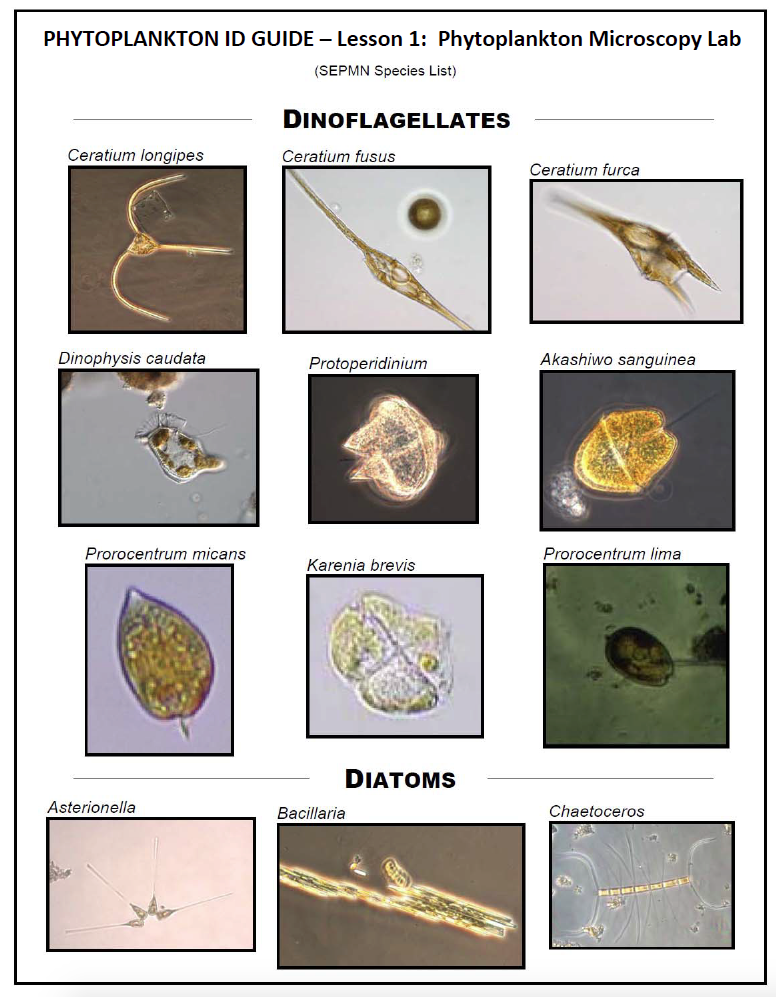
At the end of the day, Plankton's just a fun pun, and a great antagonist and thought experiment.
What is the Longest creature in the Ocean?
A) Giant Phantom Jellyfish
B) Giant Siphonophore
C) Blue Whale

B) What is the Giant Siphonophore
The Giant Phantom Jellyfish and Blue whale both clocks in at around 33m, the Giant Siphonophore takes the cake at around 40-60m long.
Granted, you could say they're cheating since they are not a single entity but a colony of cloned individuals, known as zooids, that function together as one.
Phantom Jellies are also rarely seen (only between 100-200 sightings ever), so they could be the sneaky winners here.
Where in the Water Column does most life occur?
A) Bathypelagic
B) Epipelagic
C) Abyssopelagic
D) Mesopelagic
E) Hadalpelagic
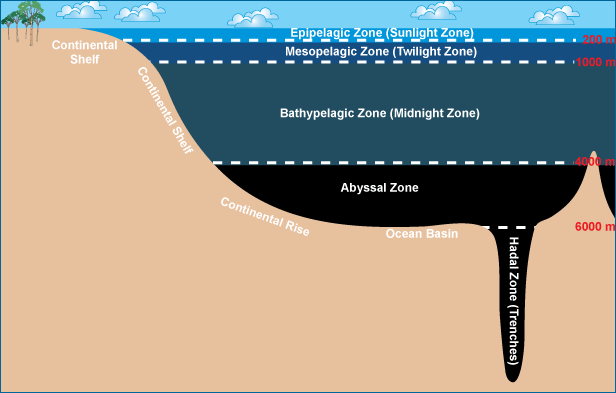
What is B, the Epipelagic!
It is believed that 90% of Oceanic life resided prominently in the Sunlight zone!
Mainly because of the access to Sunlight for photosynthesis.
What is that?
A) Sea Squirt
B) Sea Sponge
C) Eggs/ Larvae

A) What is a Sea Squirt!
Sea squirts (also called Ascidians) are typically small, sessile (in adult form), filter feeders, and an invertebrate. Often referred to as sac-like, they are hermaphroditic and typically invasive.
Although their invasive nature is somewhat contrived as they out-compete most mussels, they're also very good at colonizing artificial structures.
Some are considered a delicacy and eaten raw in dishes like sashimi, others are quite poisonous.
Which Plankton is heavily used in forensics?
A) Nauplius larva
B) Diatoms
C) Krill
Warning- talk of death, decay, illness, and murder (No pictures and minor discriptions, but talk nonetheless)
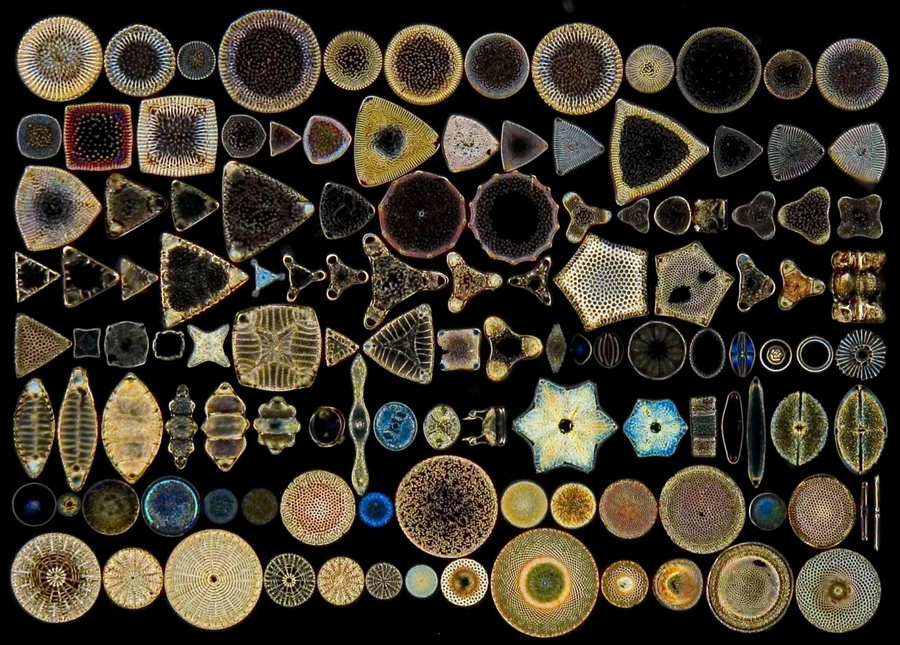
B) What are Diatoms!
Diatoms have been used in forensics since the early 1900s to determine drowning! They are located in most all bodies of water, are microscopic to 2mm in size, and have cell walls made up of silicon dioxide!
If someone passes from drowning, water and the omnipresent diatom enters the lungs and passes into the bloodstream and peripheral organs (including bone marrow!!! (Yes, if you inhale a lot of Diatoms it can result in several illnesses including silicosis and cancer)) Although if the death occurred outside of the water and the body is placed in water, Diatoms can enter the lungs but are rarely taken into the system.
So, Diatoms are often used to assist in determining the cause of death in bodies in a later state of decomposition found in naturally occurring bodies of water (rivers, ponds, lakes, oceans, etc).
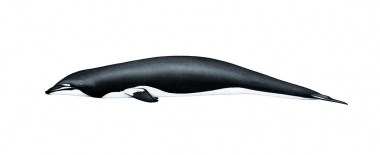
What is that?
A) Seal
B) Slug
C) Dolphin
D) Fake
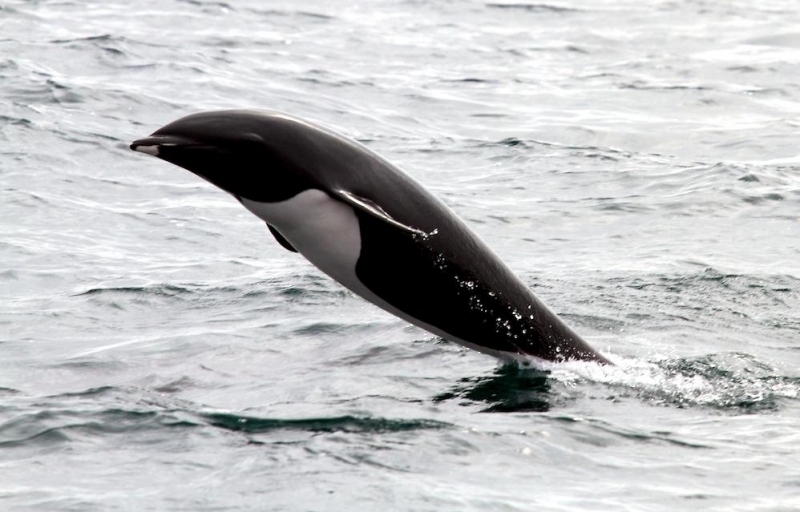
C) What is a Dolphin!
Specifically the Northern Right Whale Dolphin (Lissodelphis borealis)! The Northern/ Southern Right Whale Dolphin is the only Dolphin that lacks a Dorsal Fin!
Even without this, they are excellent swimmers and have been known to leap around 20ft over the surface of the water!